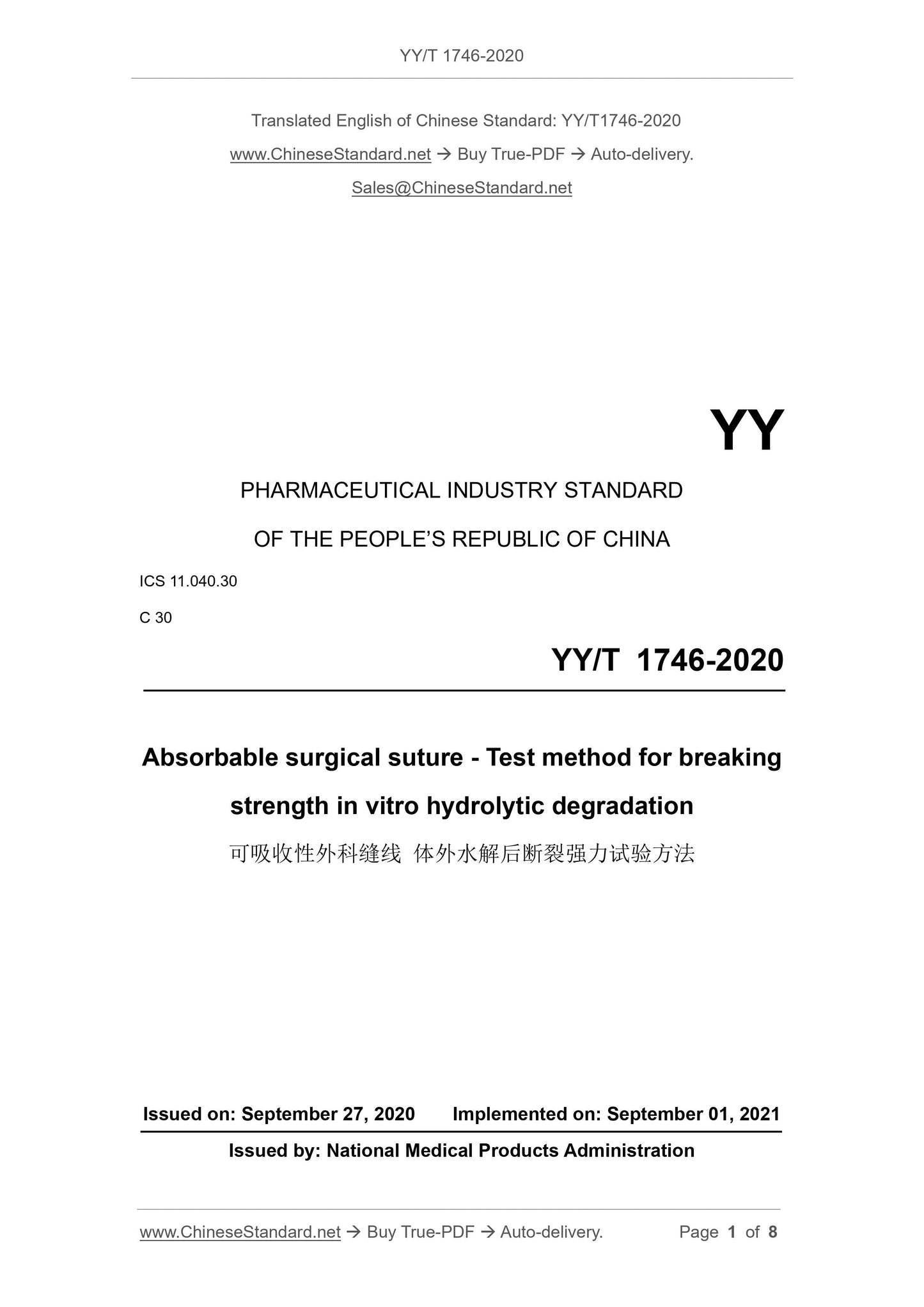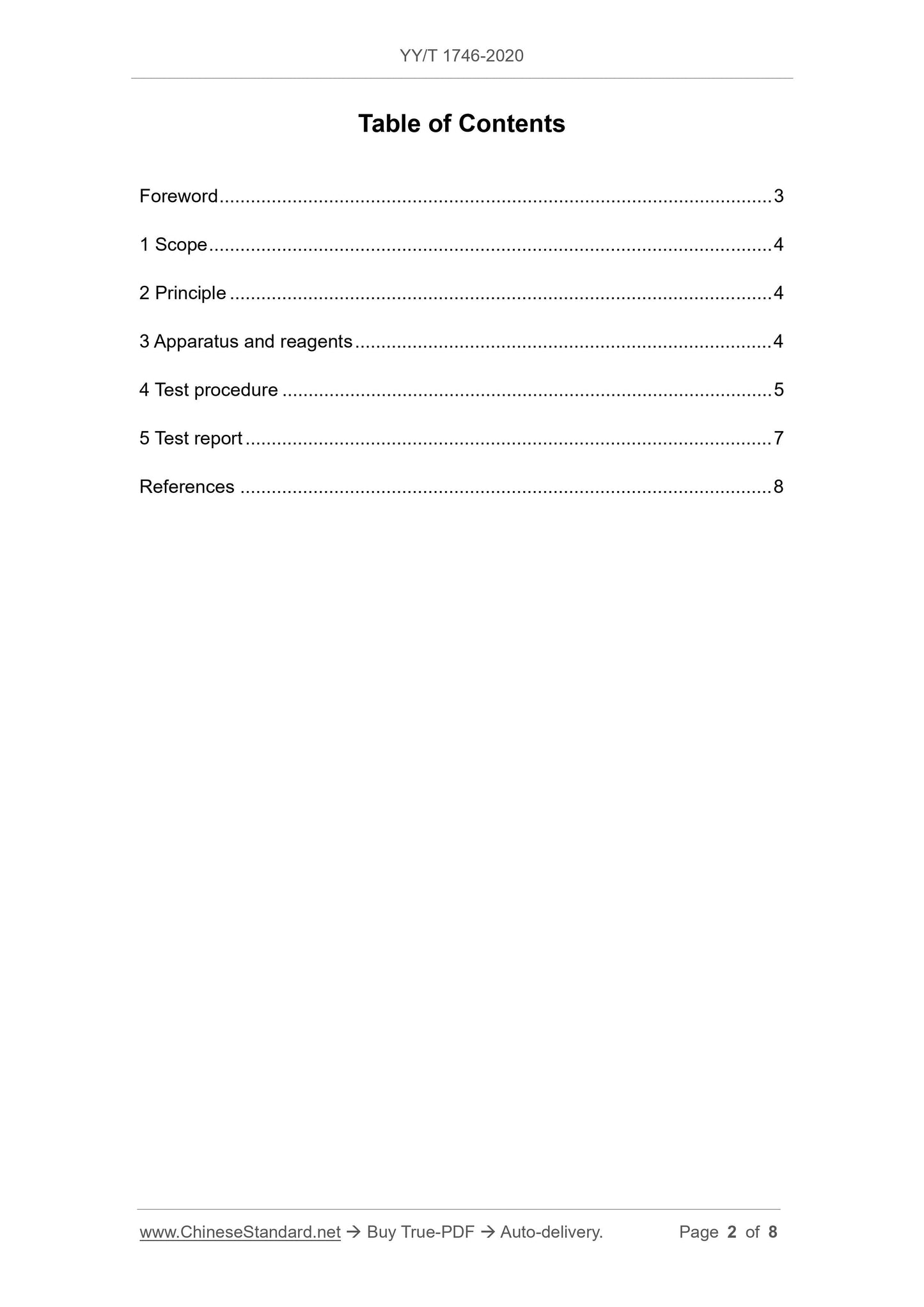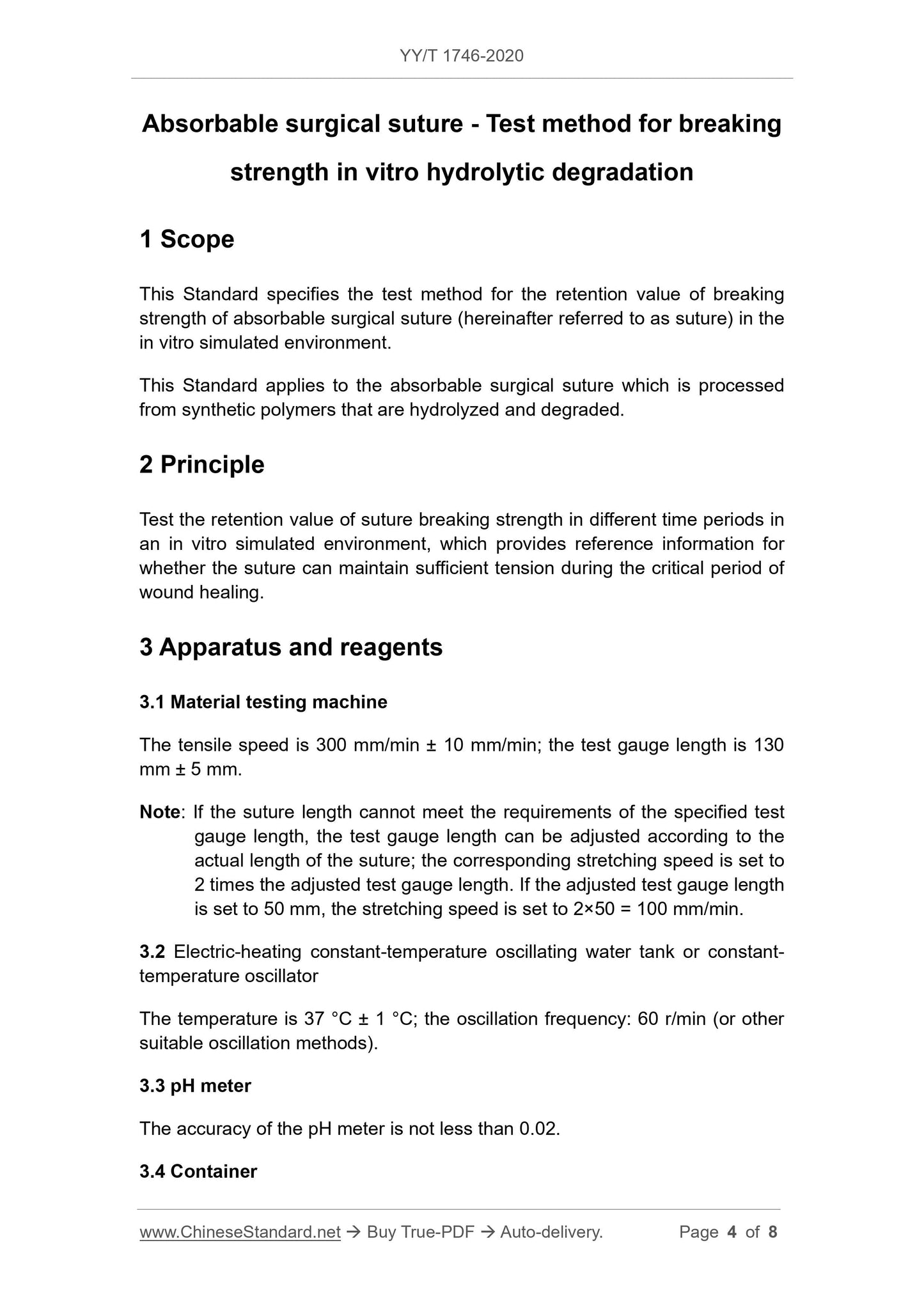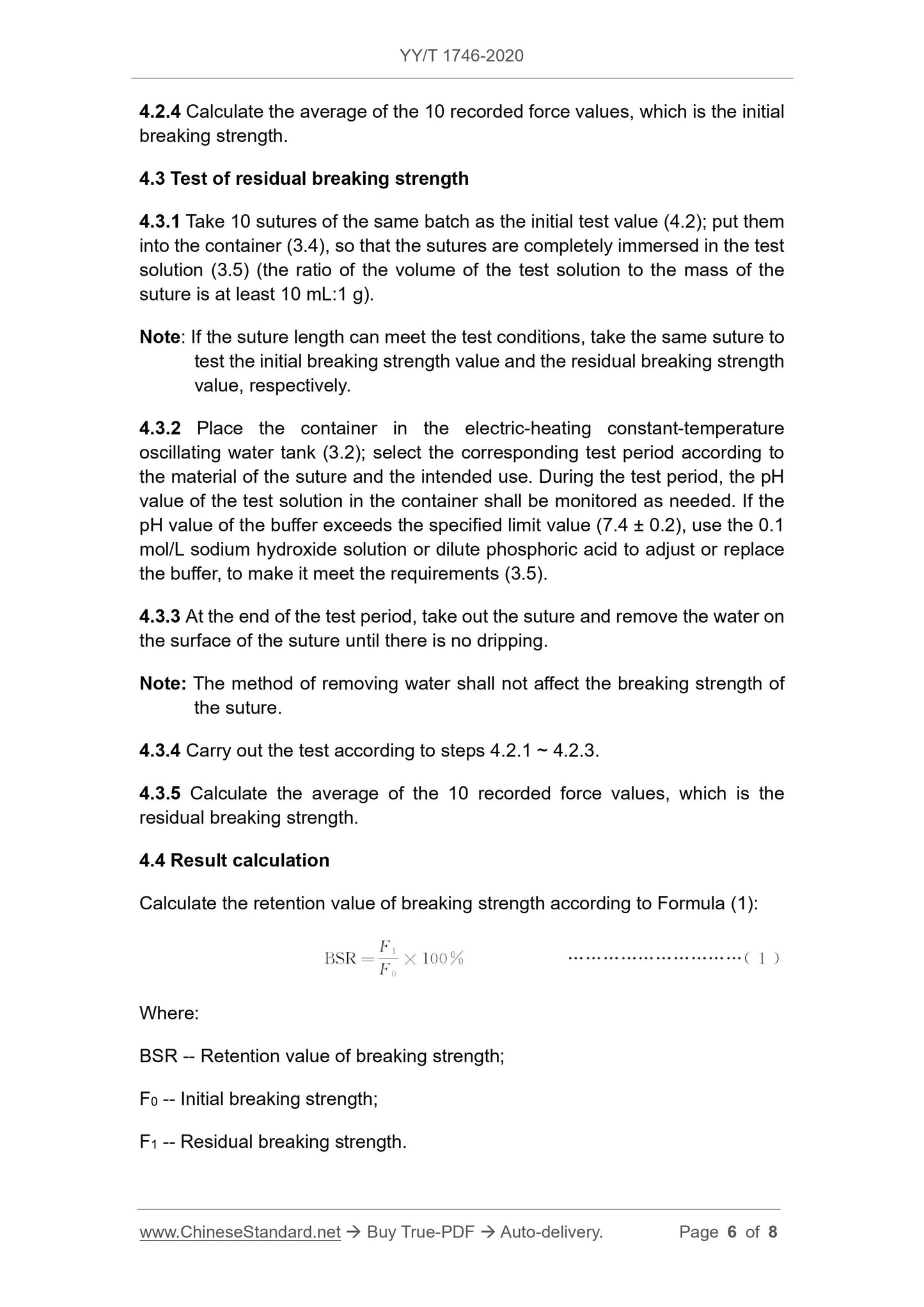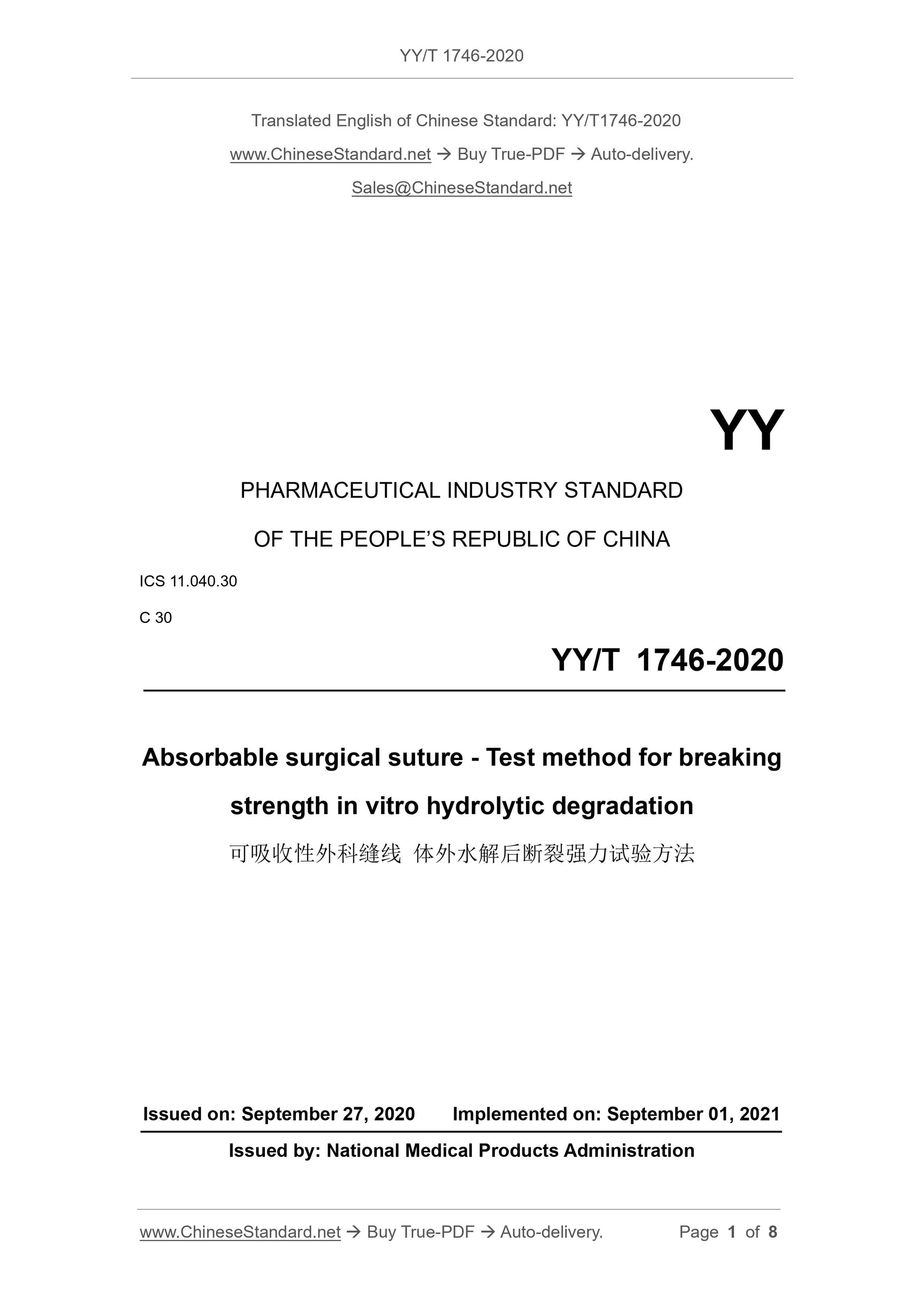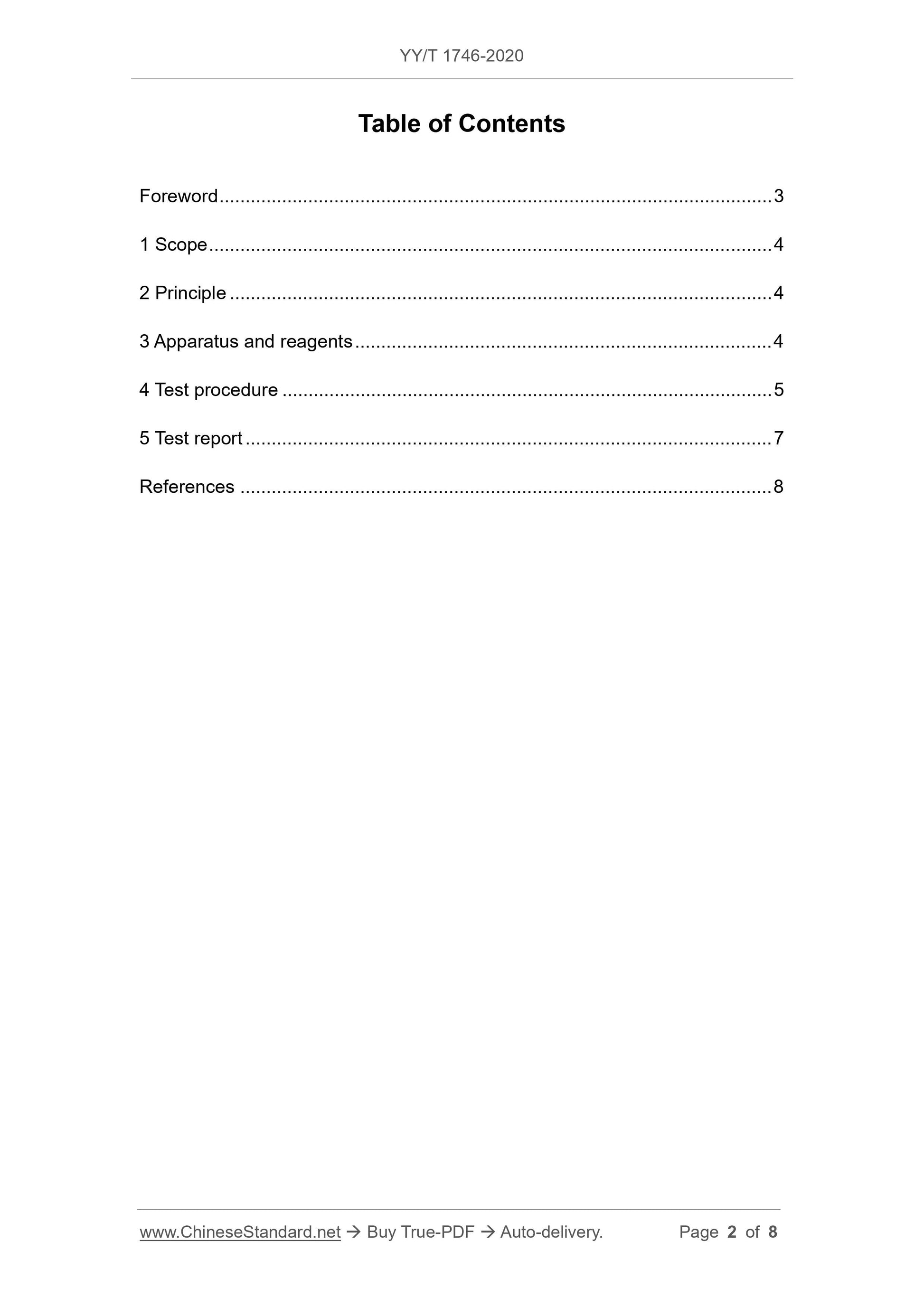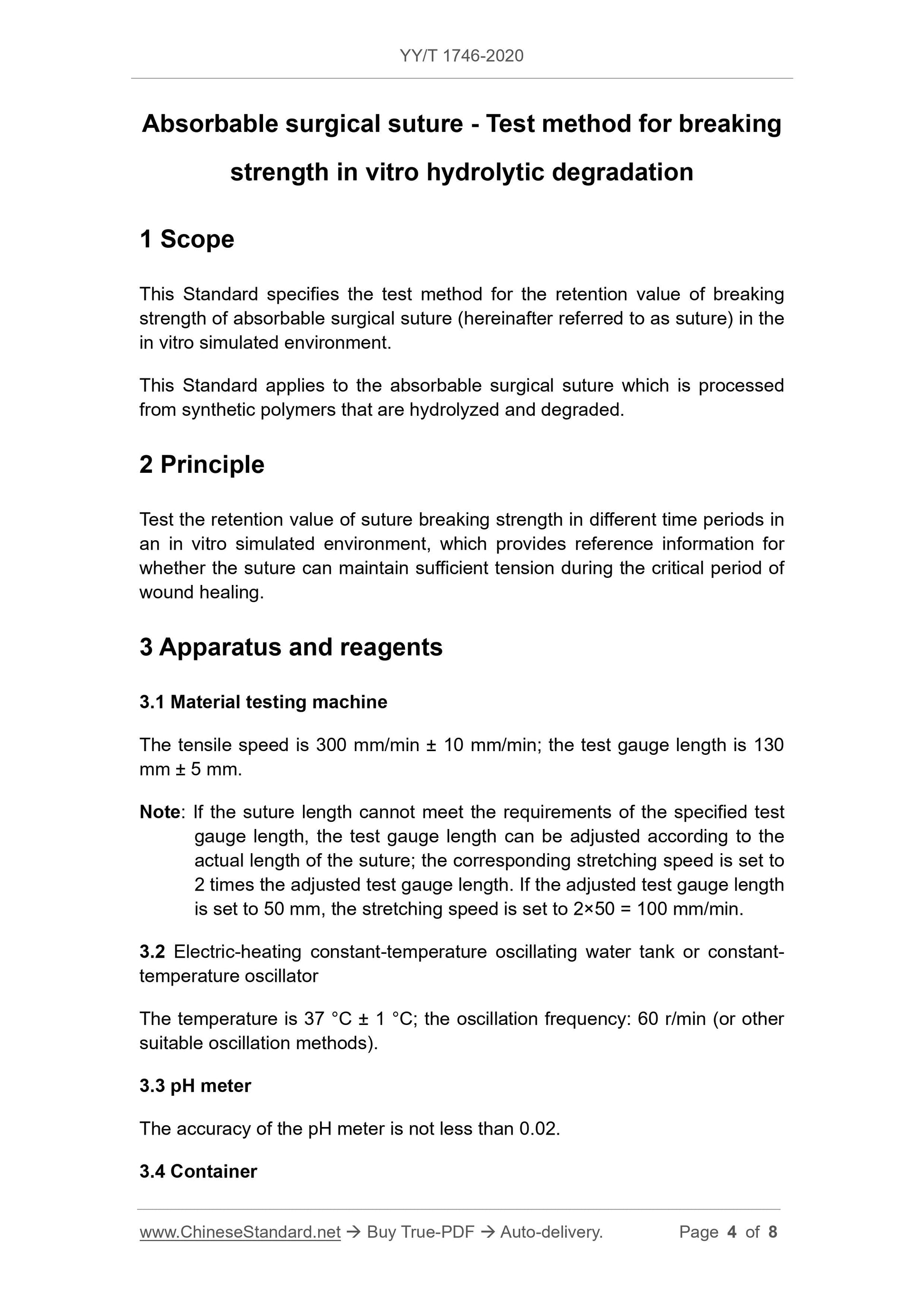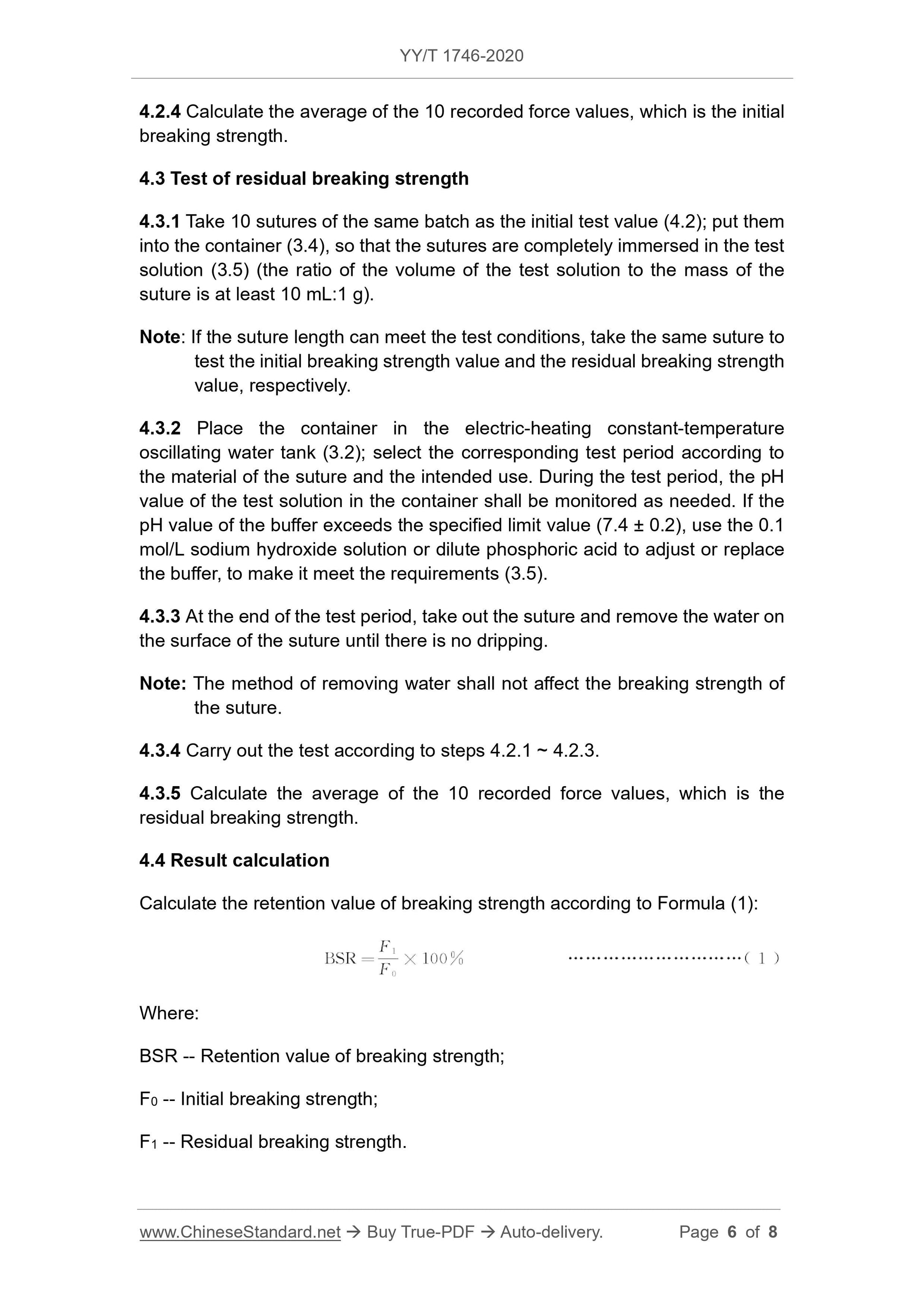1
/
of
4
www.ChineseStandard.us -- Field Test Asia Pte. Ltd.
YY/T 1746-2020 English PDF (YY/T1746-2020)
YY/T 1746-2020 English PDF (YY/T1746-2020)
Regular price
$125.00
Regular price
Sale price
$125.00
Unit price
/
per
Shipping calculated at checkout.
Couldn't load pickup availability
YY/T 1746-2020: Absorbable surgical suture - Test method for breaking strength in vitro hydrolytic degradation
Delivery: 9 seconds. Download (and Email) true-PDF + Invoice.Get Quotation: Click YY/T 1746-2020 (Self-service in 1-minute)
Newer / historical versions: YY/T 1746-2020
Preview True-PDF
Scope
This Standard specifies the test method for the retention value of breakingstrength of absorbable surgical suture (hereinafter referred to as suture) in the
in vitro simulated environment.
This Standard applies to the absorbable surgical suture which is processed
from synthetic polymers that are hydrolyzed and degraded.
Basic Data
| Standard ID | YY/T 1746-2020 (YY/T1746-2020) |
| Description (Translated English) | Absorbable surgical suture - Test method for breaking strength in vitro hydrolytic degradation |
| Sector / Industry | Medical Device and Pharmaceutical Industry Standard (Recommended) |
| Classification of Chinese Standard | C30 |
| Classification of International Standard | 11.040.30 |
| Word Count Estimation | 5,516 |
| Date of Issue | 2020-09-27 |
| Date of Implementation | 2021-09-01 |
| Regulation (derived from) | Announcement No. 108 (2020) of the National Medical Products Administration |
| Issuing agency(ies) | State Drug Administration |
Share
